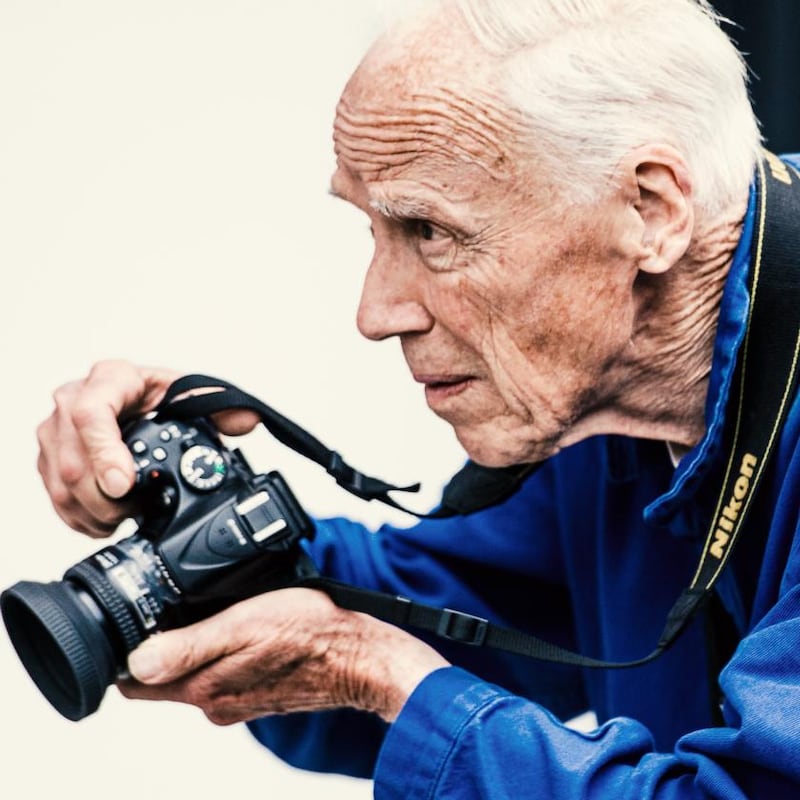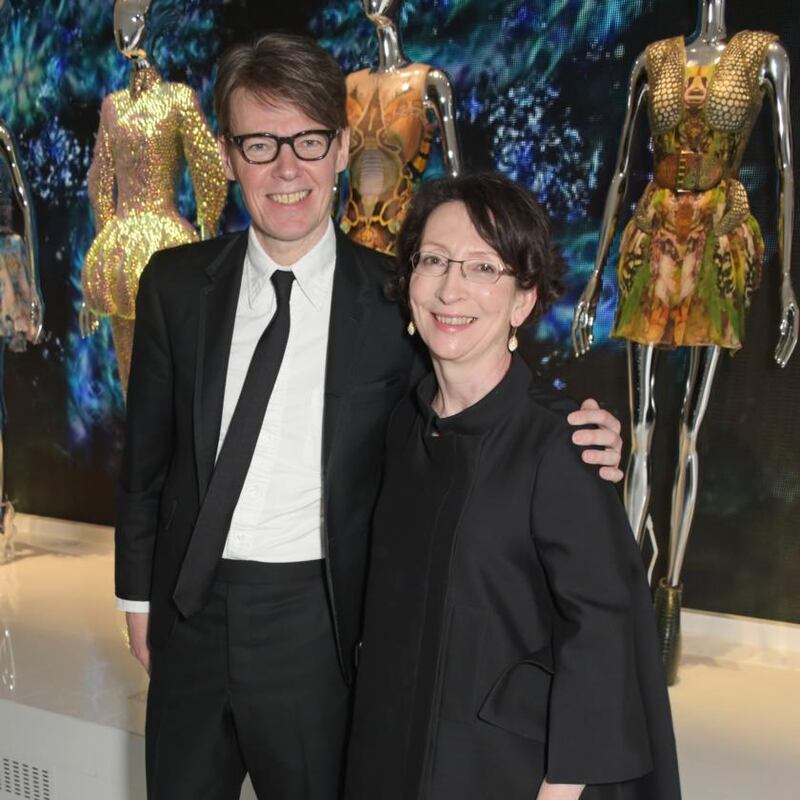Unraveled: The Life and Death of a Garment
By Maxine Bedat
Penguin,€28.95
Cheap clothing comes at a very high price. In this shocking page turner, researcher and advocate Maxine Bedat travels the world following the life and death of a garment, showing how fashion consumption fuels environmental and social inequality all over the world.
Her journey takes her from the cotton fields of Texas to the dyeing and weaving factories in China, to others in warehouses in Bangladesh, Sri Lanka and the US, and finally to a terrifying landfill in Ghana. She learns, for instance, that just one button-down shirt “was made of 40 separate cut pieces, the assembly of which comprised 50 steps on 60 machines, operated by 30 different people”. She discovers a company called Li & Fung – “which you have never heard of”– running a worldwide network finding the cheapest components and factories for any one garment (zips, buttons etc) anywhere in the world producing an enormous amount of clothing. After one order, 10,000 garments arrive in Europe looking as if they have come from one factory.
One of the most horrific descriptions is of the conditions at Amazon, the US’s biggest clothing retailer, where people are “pushed to become machines” and where the average worker earns less now than in 1979. She also discusses the insidious effect of influencers encouraging their followers to keep buying.
Well-written and accessible, this is one of the best books I’ve read on the subject, and her description of the people and places she visits and the human stories she tells serve to illustrate the destructive forces driving the industry today and the stark reality of the statistics that back them up. She concludes that the global fashion industry and the global economy are not untamable forces. “They can be designed just like our jeans. The choice is ours.”
Bill Cunningham Was There: Spring Flings + Summer Soirees
By John Kurdewan, Steven Stolman
Rizzoli

Anyone who saw the documentary on the legendary Bill Cunningham (1929-2016) would have been struck by the frugality of his home life in New York and its contrast with the society and extravagant fashion world he captured on camera. “We all dress up for Bill,” was Anna Wintour’s famous comment on the man, always clad in what the French call bleu de travail, camera at the ready. “Gotta get snappin’ and crackin’,” he would say as he chronicled everything from street style in New York on his bicycle to Paris and Milan fashion weeks, galas in the Hamptons and summertime jazz festivals. This book called Spring Flings + Summer Soirees gives a flavour of his images of summer fashion and carries a memoir by John Kurdewan, head of production at the New York Times, who worked closely with him. “He found beauty everywhere and was completely uninterested in celebrities. It was all about how people wore the clothes and their personal style.”
Dandy Style: 250 Years of British Men's Fashion
By Shaun Cole and Miles Lambert
Yale University Press, £25
The languid hauteur of the traditional dandy – assured, elegant, sartorially immaculate – can be attributed to Beau Brummell of Regency England, whose legacy can be traced to today’s urban dandies in whatever form that takes. The gentlemen of Bakongo, the wonderful “sapeurs” of Congo, with their bowler hats, pink tailored suits, glossy footwear and cigars, don’t make it into this book, however, which is about British men’s fashion over the past 250 years. With copious illustrations and photographs, it charts the progress of male self-expression down the centuries, covering the life stories of men’s clothes, why they still wear suits, men’s style and subversion and the sheer extravagance of wealthy male clothing in the 18th century, including images of the purple and green silk satin suit worn by John Hobart, lord lieutenant of Ireland from 1776-1780. The book accompanies an exhibition at the Manchester Art Gallery, which will take place in November, 2021.
Is It Really Green? Everyday Eco Dilemmas Answered
By Georgina Wilson-Powell
Penguin Random House, £12.99
The author, who worked in Dubai as a travel magazine editor with 25-plus flights a year, had a change of heart about her jet-set lifestyle and decided to set up pebble, a free digital magazine “for stylish, sustainable living”. Her book is about everyday “eco dilemmas” and how going green means making small changes whether in the kitchen, bathroom, garden, with technology, food, drink or shopping. On the fashion front, she covers eco-friendly fabrics, the dos and don’ts of washing and dry cleaning, as well as repairing and recycling. Don’t throw away plastic sequins, keep them in circulation, she cautions. In the section on family and relationships she discusses how to make your sex life greener and on the question of nappies, reusable versus disposable. The book answers more than 140 everyday green-living questions and has a useful glossary, bibliography and index.
What Artists Wear
By Charlie Porter
Penguin, €18.95
“Our clothing is an unspoken language that tells stories of our selves,” writes Charlie Porter in the introduction, arguing that “it seems logical that an artist should have an eye for clothing connected with the visual creativity of their work”. Louise Bourgeois had a pivotal relationship with clothing, but not many know that, in her later life, she had an enduring friendship with the fashion designer Helmut Lang and, at 93, was still wearing an oversize sheepskin made by him, especially for her. There are sections on workwear and denim, while suits figure prominently in the clothing of artists such as Giacometti, Georgia O’Keeffe and Frida Kahlo – before she reverted to the Tehuana dress of her native Mexico – and were worn subversively by Gilbert & George, Jeff Koons and Laurie Anderson. Basquiat, for instance, used his clothes like canvas and painted everything he wore, from his Comme des Garcons gear to shoes and hats. According to his close friend, stylist Karen Binns, “his art and what he wore were the same thing”. These are just a few of the many examples of the tools of expression used by modern and contemporary artists cited with over 300 images (without captions). There is no index, unfortunately.
Patch Work: A Life Amongst Clothes
By Claire Wilcox
Bloomsbury, €16.99

You would imagine that a book written by a senior curator at the V&A museum would reveal a lot about the clothing in her care and designers she has worked with – having been the force behind exhibitions including Radical Fashion; The Art and Craft of Gianni Versace; Vivienne Westwood; Alexander McQueen: Savage Beauty and co-curating Frida Kahlo: Making Her Self Up. But this book, published last year, is more than that, it is poetic, personal, thoughtful and quite captivating. Chapter headings, such as Entwined, Love, Gather, Seam, Loss, tell the story of her approach to each, often abstract, often concrete. The threads of her personal life intertwine with that of her work in a wholly original and poignant way. It’s about the stories we tell with our clothes and the book has been well-described as a series of meditations. A lovely summer read.











